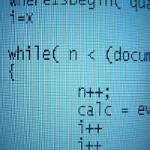R: Vectorising all the things
After my last post about finding the distance a date/time is from the weekend Hadley Wickham suggested I could improve the function by vectorising it…
@markhneedham vectorise with pmin(pmax(dateToLookup – before, 0), pmax(after – dateToLookup, 0)) / dhours(1)
— Hadley Wickham (@hadleywickham) December 14, 2014
…so I thought I’d try and vectorise some of the other functions I’ve written recently and show the two versions.
I found the following articles useful for explaining vectorisation and why you might want to do it:
- Vectorisation in R: Why?
- Chapters 3 and 4 of R Inferno
- Drastic R speed ups via vectorisation and bug fixes
Let’s get started.
Distance from the weekend
We want to find out how many hours away from the weekend i.e. nearest Saturday/Sunday a particular date/time is. We’ll be using the following libraries and set of date/times:
1 2 3 4 5 6 7 | library(dplyr)library(lubridate)library(geosphere)options("scipen"=100, "digits"=4) times = ymd_hms("2002-01-01 17:00:00") + c(0:99) * hours(1)data = data.frame(time = times) |
1 2 3 4 5 6 7 8 | > data %>% head() time1 2002-01-01 17:00:002 2002-01-01 18:00:003 2002-01-01 19:00:004 2002-01-01 20:00:005 2002-01-01 21:00:006 2002-01-01 22:00:00 |
Let’s have a look at the non vectorised version first:
01 02 03 04 05 06 07 08 09 10 11 12 13 14 15 16 | distanceFromWeekend = function(dateToLookup) { before = floor_date(dateToLookup, "week") + hours(23) + minutes(59) + seconds(59) after = ceiling_date(dateToLookup, "week") - days(1) timeToBefore = dateToLookup - before timeToAfter = after - dateToLookup if(timeToBefore < 0 || timeToAfter < 0) { 0 } else { if(timeToBefore < timeToAfter) { timeToBefore / dhours(1) } else { timeToAfter / dhours(1) } }} |
Now let’s run it against our data frame:
1 2 3 4 5 | > system.time( data %>% mutate(ind = row_number()) %>% group_by(ind) %>% mutate(dist = distanceFromWeekend(time)) ) user system elapsed 1.837 0.020 1.884 |
And now for Hadley’s vectorised version:
1 2 3 4 5 6 7 8 9 | distanceFromWeekendVectorised = function(dateToLookup) { before = floor_date(dateToLookup, "week") + hours(23) + minutes(59) + seconds(59) after = ceiling_date(dateToLookup, "week") - days(1) pmin(pmax(dateToLookup - before, 0), pmax(after - dateToLookup, 0)) / dhours(1)} > system.time(data %>% mutate(dist = distanceFromWeekendVectorised(time))) user system elapsed 0.020 0.001 0.023 |
Extracting start date
My next example was from cleaning up Google Trends data and extracting the start date from a cell inside a CSV file.
We’ll use this data frame:
1 2 | googleTrends = read.csv("/Users/markneedham/Downloads/report.csv", row.names=NULL)names(googleTrends) = c("week", "score") |
01 02 03 04 05 06 07 08 09 10 11 12 | > googleTrends %>% head(10) week score1 Worldwide; 2004 - present 2 Interest over time 3 Week neo4j4 2004-01-04 - 2004-01-10 05 2004-01-11 - 2004-01-17 06 2004-01-18 - 2004-01-24 07 2004-01-25 - 2004-01-31 08 2004-02-01 - 2004-02-07 09 2004-02-08 - 2004-02-14 010 2004-02-15 - 2004-02-21 0 |
The non vectorised version looked like this:
1 2 3 4 5 6 7 8 9 | > system.time( googleTrends %>% mutate(ind = row_number()) %>% group_by(ind) %>% mutate(dates = strsplit(week, " - "), start = dates[[1]][1] %>% strptime("%Y-%m-%d") %>% as.character()) ) user system elapsed 0.215 0.000 0.214 |
In this case it’s actually not possible to vectorise the code using the strsplit so we need to use something else. Antonios showed me how to do so using substr:
1 2 3 | > system.time(googleTrends %>% mutate(start = substr(week, 1, 10) %>% ymd())) user system elapsed 0.018 0.000 0.017 |
Calculating haversine distance
I wanted to work out the great circular distance from a collection of venues to a centre point in London. I started out with this data frame:
01 02 03 04 05 06 07 08 09 10 11 | centre = c(-0.129581, 51.516578)venues = read.csv("/tmp/venues.csv") > venues %>% head() venue lat lon1 Skills Matter 51.52 -0.099112 Skinkers 51.50 -0.083873 Theodore Bullfrog 51.51 -0.123754 The Skills Matter eXchange 51.52 -0.099235 The Guardian 51.53 -0.122346 White Bear Yard 51.52 -0.10980 |
My non vectorised version looked like this:
1 2 3 4 5 | > system.time(venues %>% mutate(distanceFromCentre = by(venues, 1:nrow(venues), function(row) { distHaversine(c(row$lon, row$lat), centre) })) ) user system elapsed 0.034 0.000 0.033 |
It’s pretty quick but we can do better – the distHaversine function allows us to calculate multiple distances if the first argument ot it is a matrix of lon/lat values rather than a vector:
1 2 3 4 5 | > system.time( venues %>% mutate(distanceFromCentre = distHaversine(cbind(venues$lon, venues$lat), centre)) ) user system elapsed 0.001 0.000 0.001 |
One I can’t figure out…
And finally I have a function which I can’t figure out how to vectorise but maybe someone with more R skillz than me can?
I have a data frame containing the cumulative member counts of various NoSQL London groups:
01 02 03 04 05 06 07 08 09 10 11 12 13 | cumulativeMeetupMembers = read.csv("/tmp/cumulativeMeetupMembers.csv")> cumulativeMeetupMembers %>% sample_n(10) g.name dayMonthYear n4734 Hadoop Users Group UK 2013-10-26 11444668 Hadoop Users Group UK 2013-08-03 9794936 Hadoop Users Group UK 2014-07-31 16445150 Hive London 2012-10-15 1098020 Neo4j - London User Group 2014-03-15 8267666 Neo4j - London User Group 2012-08-06 781030 Big Data London 2013-03-01 14166500 London MongoDB User Group 2013-09-21 9528290 Oracle Big Data 4 the Enterprise 2012-06-04 612584 Data Science London 2012-03-20 285 |
And I want to find out the number of members for a group on a specific date. e.g. given the following data…
01 02 03 04 05 06 07 08 09 10 11 12 | > cumulativeMeetupMembers %>% head(10) g.name dayMonthYear n1 Big Data / Data Science / Data Analytics Jobs 2013-01-29 12 Big Data / Data Science / Data Analytics Jobs 2013-02-06 153 Big Data / Data Science / Data Analytics Jobs 2013-02-07 284 Big Data / Data Science / Data Analytics Jobs 2013-02-10 315 Big Data / Data Science / Data Analytics Jobs 2013-02-18 336 Big Data / Data Science / Data Analytics Jobs 2013-03-27 387 Big Data / Data Science / Data Analytics Jobs 2013-04-16 418 Big Data / Data Science / Data Analytics Jobs 2013-07-17 539 Big Data / Data Science / Data Analytics Jobs 2013-08-28 5810 Big Data / Data Science / Data Analytics Jobs 2013-11-11 63 |
…the number of members for the ‘Big Data / Data Science / Data Analytics Jobs’ group on the 10th November 2013 should be 58.
I created this data frame of groups and random dates:
01 02 03 04 05 06 07 08 09 10 11 12 13 14 15 16 17 18 | dates = ymd("2014-09-01") + c(0:9) * weeks(1)groups = cumulativeMeetupMembers %>% distinct(g.name) %>% select(g.name) groupsOnDate = merge(dates, groups)names(groupsOnDate) = c('date', 'name') > groupsOnDate %>% sample_n(10) date name156 2014-10-06 GridGain London153 2014-09-15 GridGain London70 2014-11-03 Couchbase London185 2014-09-29 Hadoop Users Group UK105 2014-09-29 Data Science London137 2014-10-13 Equal Experts Technical Meetup Group360 2014-11-03 Scale Warriors of London82 2014-09-08 Data Science & Business Analytics London Meetup233 2014-09-15 London ElasticSearch User Group84 2014-09-22 Data Science & Business Analytics London Meetup |
The non vectorised version looks like this:
01 02 03 04 05 06 07 08 09 10 11 12 13 14 15 16 | memberCount = function(meetupMembers) { function(groupName, date) { (meetupMembers %>% filter(g.name == groupName & dayMonthYear < date) %>% do(tail(., 1)))$n } } findMemberCount = memberCount(cumulativeMeetupMembers) > system.time(groupsOnDate %>% mutate(groupMembers = by(groupsOnDate, 1:nrow(groupsOnDate), function(row) { findMemberCount(row$name, as.character(row$date)) }) %>% cbind() %>% as.vector() )) user system elapsed 2.259 0.005 2.269 |
The output looks like this:
01 02 03 04 05 06 07 08 09 10 11 | date name groupMembers116 2014-10-06 DeNormalised London 157322 2014-09-08 OpenCredo Tech Workshops 771 2014-09-01 Data Enthusiasts London 233 2014-09-15 London ElasticSearch User Group 614171 2014-09-01 HPC & GPU Supercomputing Group of London 80109 2014-10-27 Data Science London 363220 2014-11-03 Big Data Developers in London 70842 2014-09-08 Big Data Week London Meetup 96127 2014-10-13 Enterprise Search London Meetup 575409 2014-10-27 Women in Data 548 |
I’ve tried many different approaches but haven’t been able to come up with a version that lets me pass in all the rows to memberCount and calculate the count for each row in one go.
Any ideas/advice/hints welcome!
| Reference: | R: Vectorising all the things from our JCG partner Mark Needham at the Mark Needham Blog blog. |



